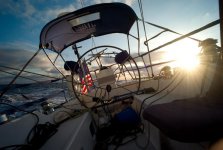chirantanpatnaik
Newbie
Hi,
Wanted to gain some insight from more experienced shooters on the forum regarding what focal length on full frame do you think is the least 'unreal' looking in terms of perspective.
I have a 15mm, which is ultrawide on my m9, good for some 'cool' looking shots. However, the more i shoot street upclose, the more i'd like my pictures to NOT distort much of the perspective. I used the 15mm on my M8, and the crop seemed to do away with some of the 'edge stretching' as i call it (barrel, pincushion and what not)
So what would you prefer as the widest you'd go with your M:- 21mm, 24mm, 28mm or even 15mm? (when the object is to tell a wider 'story' in a photograph and not necessarily distort for an 'effect')
I use a 50 almost exclusively on my m9 now.
Your thoughts would be much appreciated.
-Chirantan
Wanted to gain some insight from more experienced shooters on the forum regarding what focal length on full frame do you think is the least 'unreal' looking in terms of perspective.
I have a 15mm, which is ultrawide on my m9, good for some 'cool' looking shots. However, the more i shoot street upclose, the more i'd like my pictures to NOT distort much of the perspective. I used the 15mm on my M8, and the crop seemed to do away with some of the 'edge stretching' as i call it (barrel, pincushion and what not)
So what would you prefer as the widest you'd go with your M:- 21mm, 24mm, 28mm or even 15mm? (when the object is to tell a wider 'story' in a photograph and not necessarily distort for an 'effect')
I use a 50 almost exclusively on my m9 now.
Your thoughts would be much appreciated.
-Chirantan


